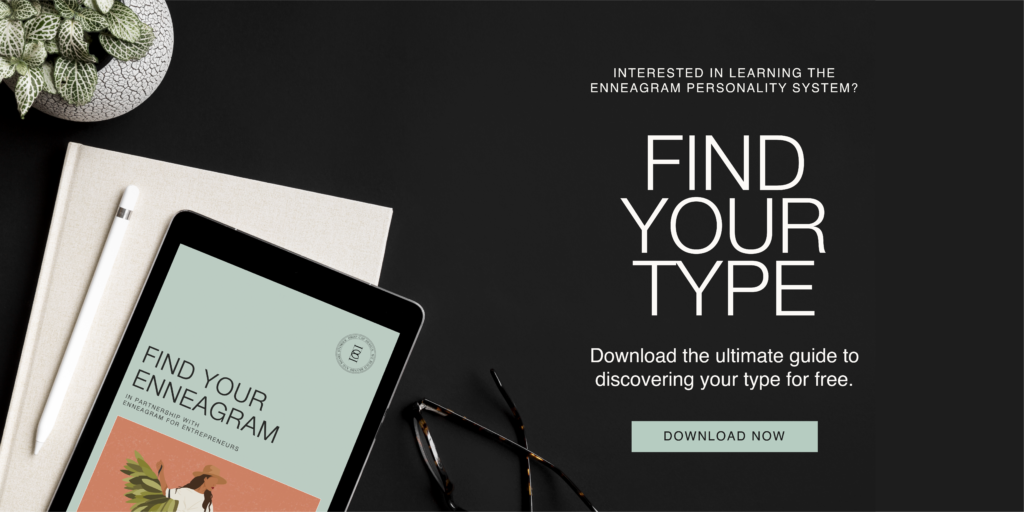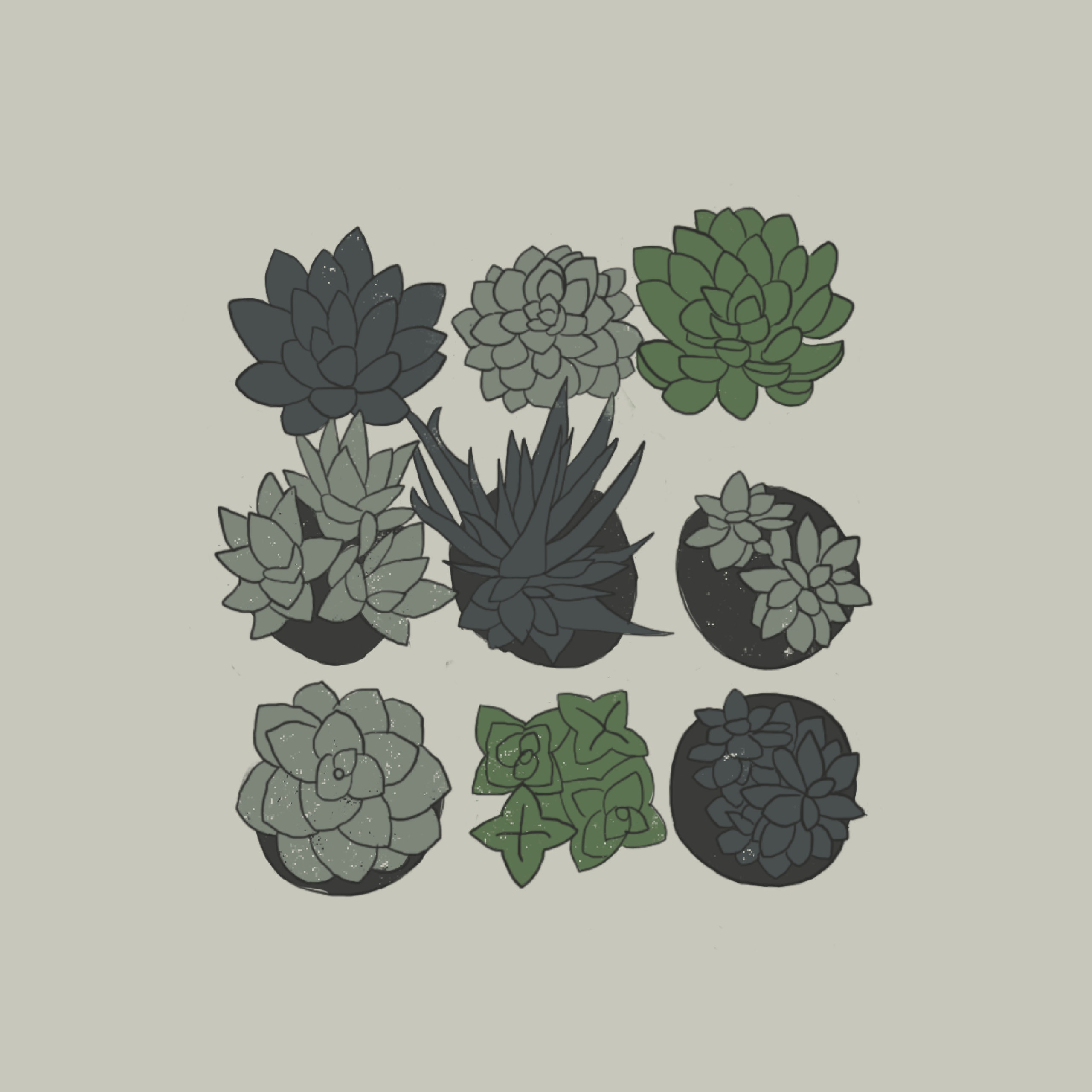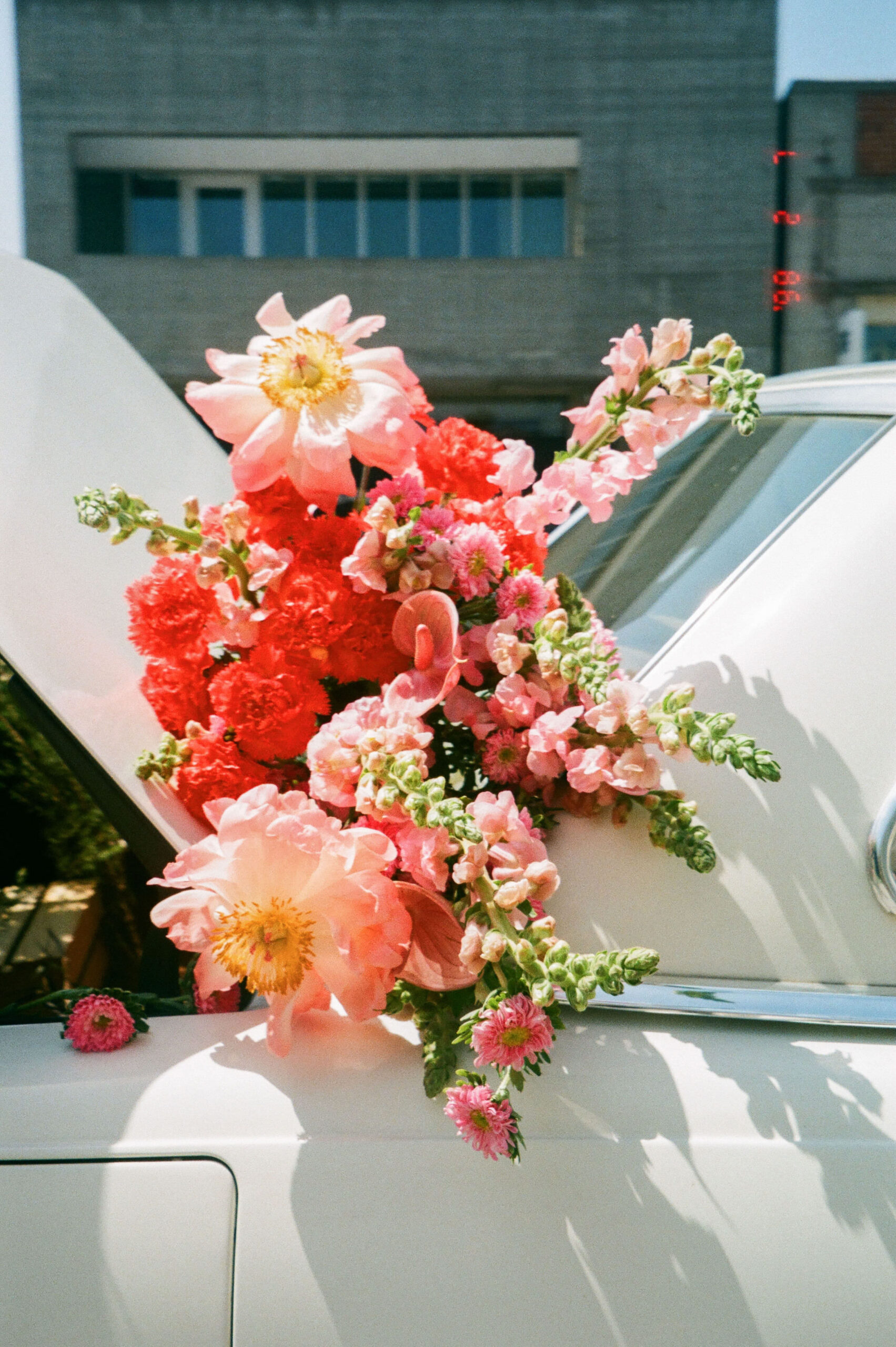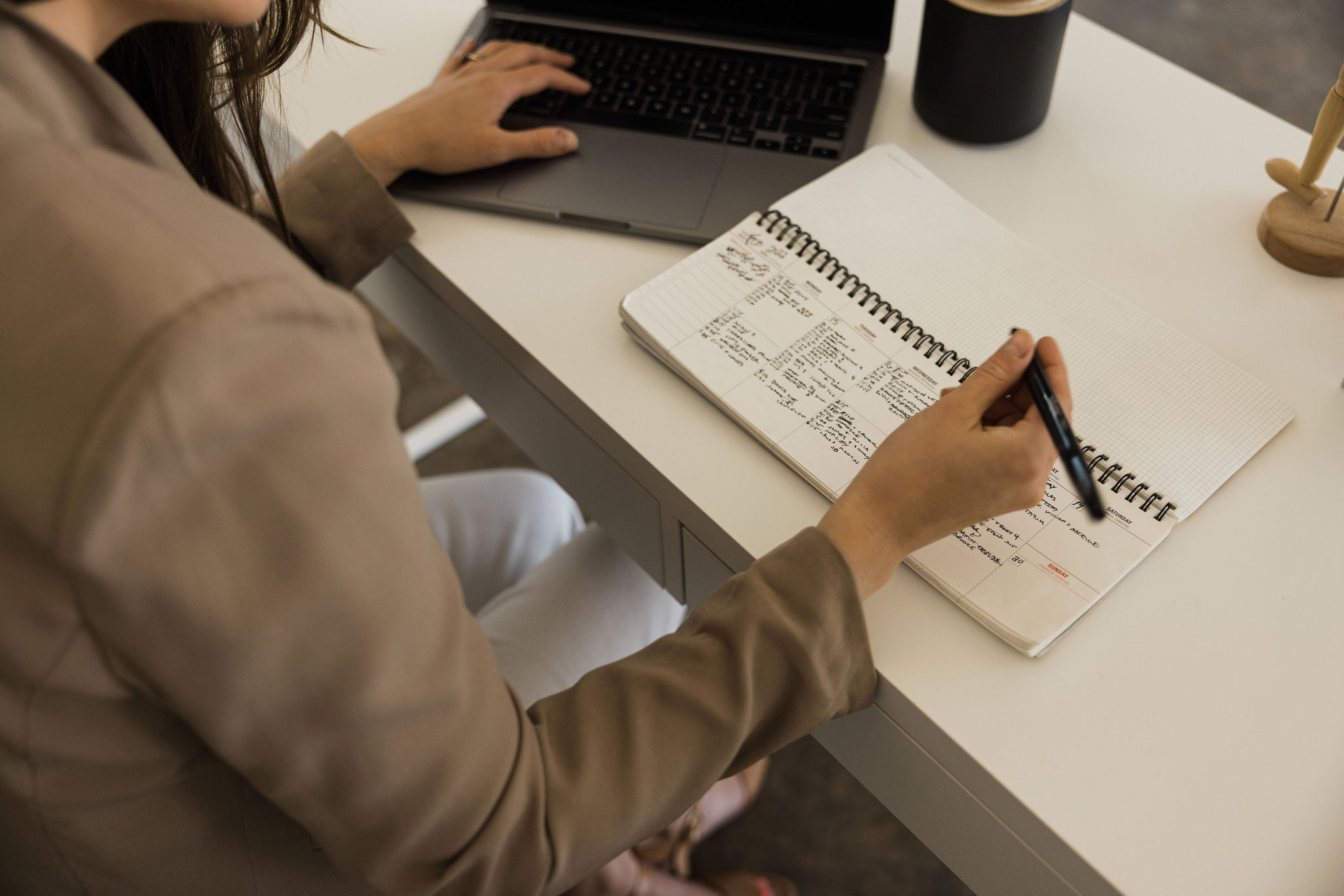If you’ve been following along over the past few months, you’ve heard us briefly mention the Enneagram. This tool has been revolutionary in helping me understand myself and my business and will be a major component of the new branding services we offer this year.
If you want a brief summary of what the Enneagram is, check out our last blog post by clicking here. But today I want to talk about why it matters.
We’ve worked with quite a few brands and creative entrepreneurs over the past few years, and I’ve seen that when business owners have an undefined foundation (or deeper purpose) they end up with either very weak or overstated brand identities.
I believe that the best thing you can do for your business is become the healthiest version of yourself. As a solopreneur, your business depends on you, and your clients may depend exclusively on you. Because of that, understanding yourself is the FIRST step you should take in building your business. It will reveal your intentions – yes, this comes before building a website or even designing a logo. I’ve found that when entrepreneurs take a deeper dive into who they are and how they see the world, the purpose behind their creative venture becomes very clear.
You may read that and think, “But I don’t have a year to go on an Eat, Pray, Love excursion of self-discovery. I need to get this business off the ground NOW!”.
And I understand. Which is why the Enneagram is a revolutionary tool for branding. With the Enneagram, you’re able to quickly learn the strengths and motivations of your number. As well as your weaknesses and potential missteps. And you want to know what’s really cool? If you take the Myers-Briggs, StrengthFinders, and Enneagram together, they actually validate your type. It’s pretty amazing how it works!
Here in the studio, we created a guide to help you find your type. This, by NO means, is an official tool for finding your type, but we wanted to create something to at least get you a little further along when trying to figure it out. The goal is to get you to start thinking about what motivates you.

My Journey
I’m going to use myself as an example to show you how powerful this process can be.
I’m an Enneagram Type 3. This means that I am motivated by success. I am driven by a need to shine and outdo myself. Highly ambitious and aware of how I am being perceived. I fought for years against this core motivator because I thought it was wrong. I was ashamed that I cared about what other people thought. And when I’m in an unhealthy place, it can be bad! But it’s also what makes me really good at branding. When I’m healthy and leaning into my calling, I’m driven by a need to make everyone look good and reach their full potential.
When I took the free 16personalities test, it was a split test. I’ve taken it twice before and gotten both INFP and ENFP (I’m only 1% off on the introversion/extroversion scale). I think that has a lot to do with my mood. When I’m feeling healthy, I tend to be more extroverted; i.e. more comfortable in front of people because I know I’m in a good place. However, when I’ve had a rough week or I’m stressed, I don’t want to be around people who may pick up on that frantic energy and judge my ability to handle it.
And here’s where it gets FASCINATING!
When I look back at the Enneagram, Type 3 goes to an unhealthy Type 9 in stress. A Type 9 is the peacemaker. Want to know what the introverted version of myself (when I’m stressed and don’t want to see anyone) is called? The Mediator. BINGO. When I notice myself pulling away from others and secluding, it’s a big sign that I’m in a stressful state and a cue to myself to figure out what’s going on.
However, when I’m in a healthy state (ENFP) I am a Campaigner (“enthusiastic, creative, and social free spirits”). I know that is the best description of me when I am inspired and confident in my surroundings.
So what does this mean for my business?
For one, it means that branding is a particularly perfect fit for me. I always tell people that I “stumbled” on branding during my pursuit of editorial design. But the more I find out about myself, the less I think it was an accident.
Because I am acutely aware of how people and ideas are perceived by others, I’m able to craft a visual look that extends my client’s message. The longer I’m in branding, the more I feel pulled to the strategy side. The more I embrace my own unique personality (flaws and all), the better I become at my job.
I also am aware that I over-commit. It’s something I’m constantly struggling with. I fit too many tasks in a day, say yes to too many projects, and then struggle to meet deadlines and overextend myself. I know that’s letting my ambition drive. My goal this year is to calmly place my ambition in the passenger seat and learn patience and restraint.
How can you start your own Enneagram journey?
The interesting thing about the Enneagram is that there’s not a tried-and-true test for figuring out your type. The Enneagram is based on motivation rather than behavior, so it does take some self-awareness to figure out which number you are. Chances are, you aren’t going to want to be your number the first time you read it. It’ll feel like someone read your mind. I fought against being a Type 3 for so long until some people really close to me encouraged me to embrace it and reminded me of my strengths.
Here are a few steps for determining your type:
1. We created a guide to jump start your journey. It will at least help you eliminate a few numbers you know you are NOT.
2. Look at your potential number’s stress and security points. Think about how you act when you’re stressed and how you act when you’re in a really good place. Finding your type is not just a conclusion, it’s a process. So consider writing down how you’re feeling in certain situations to determine what motivates you.
3. Look at the numbers on either side of your potential number. Do either of those resonate? You’ll most likely identify with one wing over the other, which is why some people say they are a 1w2 or 4w3. (See point 6 for an explanation on this)
4. Take the Myers-Briggs 16personalities test (and maybe the StrengthFinders test too) to see if your results validate your Enneagram number.
5. Ask your friends and family. Chances are they will definitely be able to help you pinpoint your number. Just remember that the person you ask should be someone who knows you well. It’s more than just observing how you act, it’s knowing how you see the world.
6. Understand that each personality on the Enneagram is like a color. While your color might be blue, you could fall anywhere from teal to indigo on the scale. You don’t have to resonate with every aspect of the personality so long as you identify with the core motivation.
A Few More Thoughts
There are a few more things to know about the Enneagram system before you try to identify your type. These points are from the Enneagram Institute, and I think they are very helpful in understanding how to approach this system.
You will not change from one type to another. It is believed that you have your personality from the time you are born, but grow into it during your childhood. The best indication of your personality is to think back to how you were around age 20-22 – when you were outside of your parent’s influence but not quite at the level of self-awareness to edit your behavior to fit in with others.
Each type’s description applies equally to both genders. No type is inherently masculine or feminine. It’s based on human motivation, not specific behavior. And by that, I mean that your thought life is a better indication of your type than the way you act on a daily basis
You may not resonate with every part of your type’s description because you are in a constant flux between healthy, average, and unhealthy. You may also be in a state of stress (where you take on the thoughts and behaviors of the type on your stress path) or security (where you take on the thoughts and behaviors of the type on your security path.)
The numbers that identify each type are value neutral – neither positive or negative, greater or lesser. Numbers make it easier to see each personality from an unbiased point of view without using psychology terms that may have a stigma.
The numerical ranking of the types are not significant. Like we just said, the numbers do not make a personality greater or lesser.
No personality type is better or worse than another (although when you first find your type, you may feel like you “should” be a different number.) Culture and society can often celebrate one personality type over another, but as you learn more about each one, you’ll see how each type each brings something unique and beautiful to the table. If you feel like your type is “bad,” it has more to do with what your culture or community celebrates, but is not a true indication of your type’s worth. Your goal should be to become the best version of yourself, not to imitate a different personality.
What’s Next?
So you may be wondering what happens after you find your number.
I’m going to be writing a nine-part blog series based on The Modern Enneagram (and some of my own experience / additional research) to further explain the Enneagram model.
During this series, we’ll talk about the strengths and weaknesses of each number, a path towards growth, how to handle stress, and what it looks like to work with each number.
If you’d like to follow along in the book (which we will not be directly following, but heavily referencing) then grab a copy of The Modern Enneagram on Amazon.
My hope is that by seeing how diverse each number is, but how they work together, we can start the conversation around diversity in the creative entrepreneurial space. We don’t all see the world the same way, and we aren’t motivated by the same things. And that’s beautiful! By embracing the things that make us different, we’re able to have a much larger impact on the world.

Once you’ve found your number, comment below! I’d love to hear your story and what led you to knowing which personality type was yours.




I’ve heard so much about the Enneagram and have yet to dive in very deep, so I love that you’re covering this topic! Personality/strengths/leadership tests have always intrigued me, but I’ll admit I’m a little puzzled on this one…
I’ve taken a couple different Enneagram tests (yours included) and have been marked as a 7. There is a lot in the 7’s description that I resonate with, but the 7 is always described as very extroverted, even expressive. And while I’ve gone through seasons of being more extroverted (because my circumstances demanded it), I definitely wouldn’t consider myself in either the extroverted or expressive categories. In fact, I probably come across as more aloof or cold on the outside, but, inside, view myself as more warm, spontaneous, fun-loving (more of the 7)…
I ran into this same thing on the Meyers-Briggs – always testing as the ENFP (very similar description to the 7)! Maybe I need to embrace a side of me that I’ve blocked off or people have said that I’m not?? People always laugh when I tell them I test as an extrovert! Haha
Anyway, very curious to keep learning about it and may just grab this book and read along! Thanks!
Lauren
This is so interesting, and a REALLY good point! The biggest differentiating factor with the Enneagram (that I LOVE!) is that it deals more with your motivation than your behavior. Which means you can definitely be an introverted seven, but may still be motivated by change, spontaneity, and avoiding pain. I think the seven gets a stereotype that can feel particularly limiting, and I’d encourage you to read a few books about the Enneagram and pay attention to how a seven reacts to stress! I think it would be really cool to hear the perspective of an introverted seven!